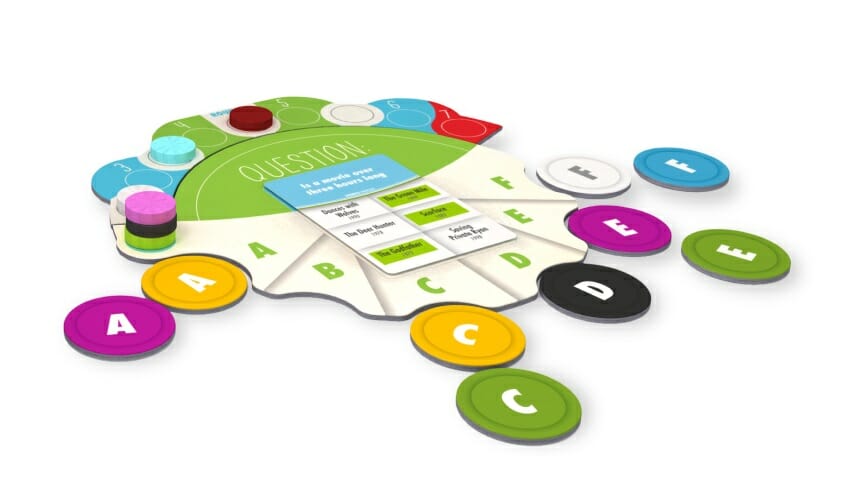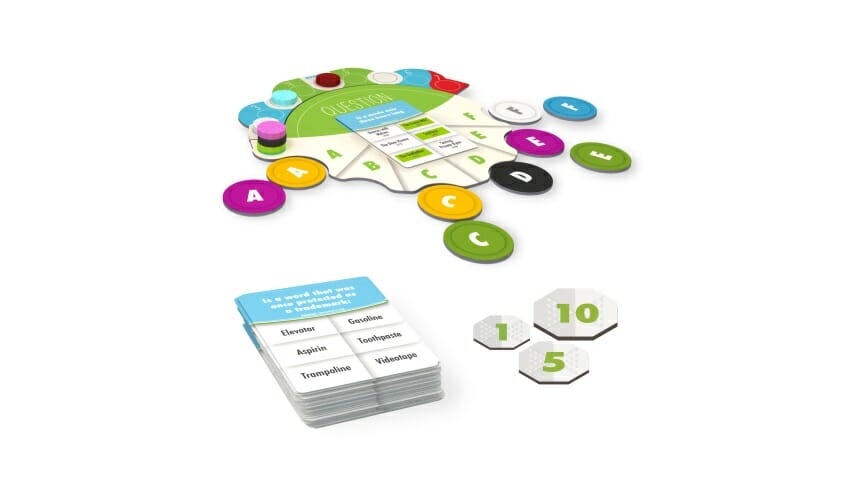Ken Jennings and the Creator of Magic Team Up on the Fun Party Trivia Game Half Truth
Images courtesy of Studio 71 Games Games Reviews board games
What happens when you put the most famous trivia champion in the world together with the man behind one of the most commercially successful games of all time? It turns out you get a quirky new party game that will appeal to folks who, like me, think most party games aren’t fun and just insult your intelligence.
Half Truth is the new trivia/party game from one of the most famous names in board game design, Richard Garfield (Magic: the Gathering, King of Tokyo), and record-setting Jeopardy! Champion and author Ken Jennings. It’s probably more party game than trivia game—some trivia knowledge is helpful, but even if you’re an expert at pub trivia or the like you aren’t going to know most of these questions—and revolves as much around a scoring system that involves betting on your own guesses as it does on what you know about the topics.
The game unfolds over three rounds, during which players will unveil a variable number of question cards, each of which has a category on top and six items that could be in that category. Half are, and half aren’t, but in most rounds you just have to identify one of the correct answers to move up the round track. Each player has six tokens lettered A through F, and plays any tokens that they believe match the right answers, face-down, until everyone has finished placing tokens. If you get a second answer right, you get a bonus point; if you get all three, you get two bonus points. The catch is that all of your answers have to be correct for you to get anything—if you get two right and one wrong, you don’t move up the track or get any bonus points.
The scoring values vary a little bit for each card, as you’ll roll the game’s one die before you start the card. If you roll a 1, 2, 3, or 4, every player who gets all of their answers right for that card moves up the round track that many spaces. If you roll the 1+, you move up one space for getting everything right, but your bonus points for additional right answers past the first one are doubled. If you roll the side, you flip the script and have to place tokens matching wrong answers, which might be easier or harder depending on the question, and the round track value for getting all of your answers right is two spaces. At the end of each round, you get points relative to your space on the round track, with the maximum going from 7 in the first round to 12 in the last one.

So the heart of Half Truth is in the betting, and a little mental calculus for each card. If getting one right answer is worth moving 4 spaces on the round track, do you try to guess a second answer for one more bonus point, knowing the risk is a zero (with opponents possibly moving up four spaces) if your first answer was indeed correct but your second wasn’t? If the die roll is 1, and you’re sure of one answer and think you know others, do you just try for two or three because the downside is lower? Each of these quick calculations really depends on how certain you are of your answers, and the question cards I’ve seen so far were well enough calibrated that the two over-educated adults playing rarely knew more than one answer for sure.
That means that Half Truth isn’t a true trivia game, at least not to my mind: you aren’t going to be much better at this game than everyone else if you know much more trivia, because these aren’t the kind of general-knowledge questions you might expect in a pure trivia game. It’s trivia-adjacent, because the questions aren’t ridiculous, and you’ll know a few answers here and there, or you’ll at least have some educated guesses. It was a bigger challenge for my 13-year-old daughter, who didn’t have the cultural or historical knowledge to keep up with my partner and myself, especially for questions such as which three songs on the card were among Billboard’s top three for the year 1986. (One of them, among the all-time one-hit wonders, has been stuck in my head for almost a week now.) It was more a function of her age than her education level, though, and the game isn’t overly skewed to certain cohorts of adults based on the questions I’ve seen so far.
But it’s also a lot better than your typical party game. It’s not pointless, it’s not juvenile, and it definitely gets you talking or laughing because you can’t believe answer D was wrong or answer F was right. More than one card sent us to our phones to double-check what the card said (sure enough, rubella was, in fact, eradicated in the western hemisphere in 2015). I don’t care for many party games because so few of them worry about making the game part fun or challenging, and that’s why I almost never review them here or anywhere else. Half Truth is smart enough to feel like a real game, but still simple enough to work well with a crowd (playing up to six people) as long as everyone is old enough to know the general subjects of the questions. I admit to a bit of skepticism when I first heard about the game, worried the fame of its two designers might exceed its actual worth, but it turns out Half Truth is more than half decent.
Keith Law is the author of Smart Baseball and a senior baseball writer for The Athletic. His latest book, The Inside Game, is due out in April 2020. You can find his personal blog the dish, covering games, literature, and more, at meadowparty.com/blog.